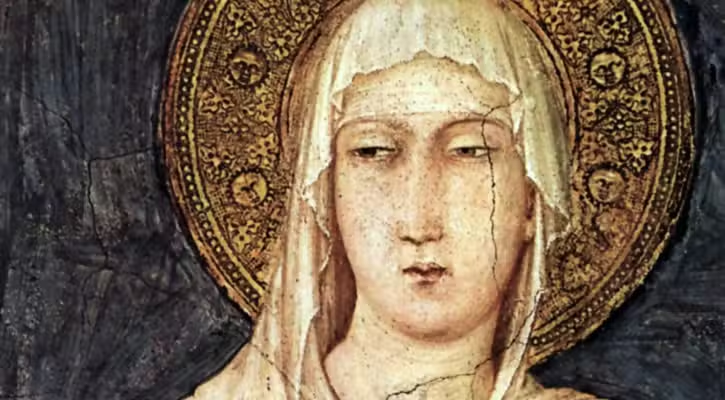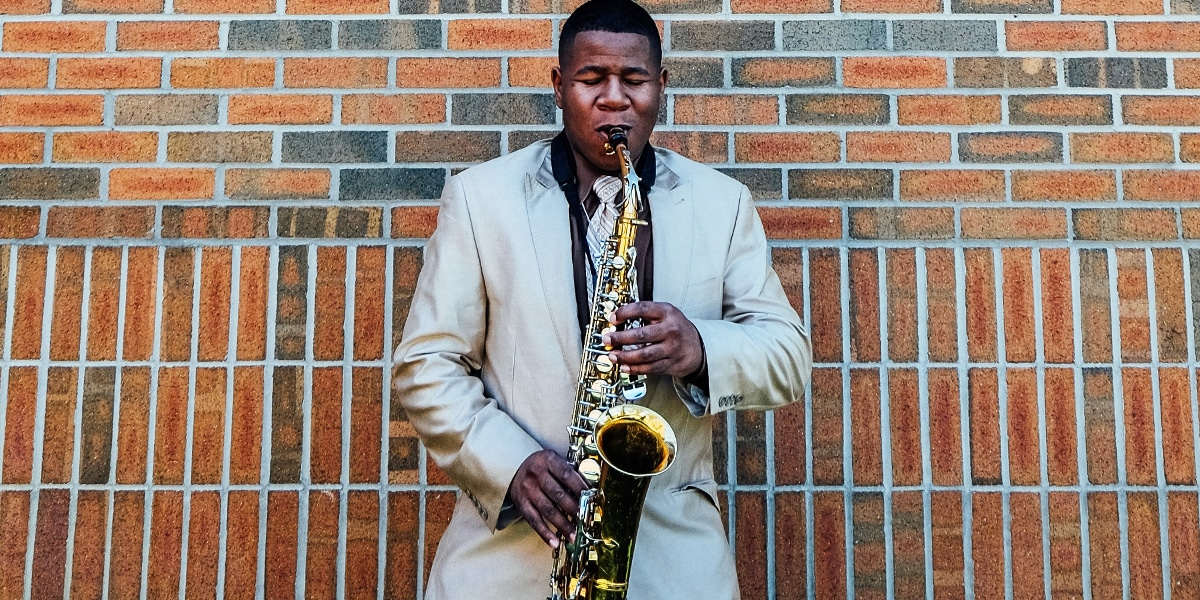East of the Piazza del Commune in Assisi, stands the Cathedral of San Rufino. Near the church and its adjacent piazza once stood the home of the nobleman and knight, Favarone Offreduccio and his wife, Ortulana. On July 16, 1194, Ortulana gave birth to their first of three daughters whom they named Chiara.
On the southern side of the Piazza del Commune, and a few streets down the side of the mountain, stood the home of Pietro di Bernardone, a cloth merchant, and his wife, Lady Pica, a member of an aristocratic family from Provence. Pietro was a member of the emerging merchant class.
As such, they were not counted among Assisi’s nobility; they belonged to the minores. In 1181 or 1182—approximately 11 years before the birth of Chiara—Pica gave birth to a son whom they named Giovanni. Legends speak of his father’s love for all things French or of Lady Pica’s French background as possible explanations for Giovanni being call “Frenchie,” or Francesco.
While the geographic distance between these family homes was not that great—Assisi was a small medieval city—socially, Chiara and Francesco lived miles apart. The two grew up in their own separate worlds. As a lady, Chiara lived a protected life and learned the skills and arts of a noblewoman, refined and appropriate for her station in life. Francesco wasn’t too keen on book learning. He was more interested in using his father’s wealth to support his life as a troubadour, and he was very popular among the young men of the city. He had dreams of going off to war and becoming a knight. Chiara’s parents had dreams of her marrying a nobleman and living an honorable life.
But their stories were destined by God to merge into a loving tale of mutual respect and love for each other and an all-consuming love for God. It is the story of how Chiara first became a follower of Francesco, and then went on to found a group of women who have graced the world for over 800 years.
The First Franciscan Woman
By the time Clare was about 12 years old, around 1205, Francis had gone off to war, but had not gained knighthood. Rather, he had come back sick and broken in spirit. As he recuperated, wandering the hills outside of Assisi, he began to lose interest in his life as a troubadour. He became more serious and began searching for some direction in his life.
One day, while praying in the run-down church of San Damiano, he heard the crucifix tell him to “Repair my church.” Taking the words literally, Francis began begging masonry materials and other necessities to repair the building. Clare may not have been old enough to have been aware of Francis’ activities at that time. But she certainly would have been aware of his rebuilding San Pietro della Spina soon thereafter, and then Our Lady of the Angels, the Portiuncula—located on the swampy plain below Assisi—which was to become the birth place of Francis’ new community. She was very impressed by his changing behavior, and legends mention Clare and her family taking food to the brothers working on the latter churches.
Then, in 1210, Clare heard Francis preach in the Cathedral of San Rufino. She was taken by his words as was he with her holiness of life, and the two began to meet.
Over the next few years—with the facilitation of Lady Bona di Guelfuccio, Clare’s distant cousin—they discussed her desire to serve the poor, their mutual love of God, and her inclination to reject the social mores of her class. Francis encouraged her in her growing resolve.
On Palm Sunday night, March 18, 1212 she made the break. Somehow, perhaps with help from someone inside her home, and with the local bishop’s knowledge, she managed to leave her home in the walled city and flee to Our Lady of the Angels where she was received by Francis and his brothers into their newly founded community. But because the Portiuncula was not set up for a mixed-gendered community, Clare spent a short time with the Benedictines of San Paolo della Abbadesse and then at the Monastero di Sant’Angelo di Panzo where her sister Catherine—whom Francis renamed Agnes—joined her.
All of this, however, did not set well with her uncle, Monaldo, who tried forcefully but unsuccessfully, to dissuade the women of their new commitment and to force them to return home. But the sisters were insistent and remained committed to following St. Francis.
Within a few weeks, Clare and Agnes moved to San Damiano where St. Clare was to remain the rest of her life.
A New Order
As Clare and her sister began receiving new sisters, including their mother, Ortulana, and younger sister, Beatrice, the question of their way of life arose. Francis had clearly opted for the mendicant life for his community of men, which differed significantly from that lived in the monasteries. In his view, the friars were to live off their work and, when necessary, beg alms for a living. His guiding vision was the radical poverty of the life of Christ and his apostles as reflected in the Gospels, and it was this life that Clare wanted for herself and her sisters. The monastic life was good, but it was not for them. God was calling them to a new form of life, evangelical rather than monastic.
Practically speaking, St. Clare offered a new approach to authority and sisterhood, to community prayer, to the enclosure, and to financial security. For her, the abbess—a title she reluctantly accepted—was to be a position of service within the circle of sisters who shared life without hierarchical distinctions. Authority was seen horizontally rather than vertically.
When it came to prayer, Clare wanted her sisters to pray simply, reading as opposed to singing as was the custom in the monasteries. The Divine Office was to reflect the pattern of the friars who adopted the simple form used by the Roman secular clergy at the Lateran, the popes’ cathedral in Rome.
And St. Clare wanted to maintain a more open contact with St. Francis and the friars than the monastic models proposed to her by others would have allowed.
Finally, Clare insisted on the “privilege of poverty.” Like St. Francis, whose rule forbids all ownership, St. Clare wanted this Gospel standard for her sisters as well. Many hierarchs in the Church viewed this as impractical and hazardous for monasteries of women.
They felt that the sisters needed financial security and that monasteries needed to be financial endowed to foster the life lived by the nuns. St. Clare saw things otherwise. She wanted her sisters to rely on the love and generosity of God and on the work of their hands. And her vision of poverty would guarantee that. No need for landed monasteries and endowments; just a total reliance on the love of God. Neither the individual sisters nor the community needed to secure the future against disaster: They had the Lord as a haven.
While the “privilege of poverty” was granted by Pope Gregory IX in 1216, the tug-of-war between St. Clare and the Church officials continued as others wrote and proposed to her a series of rules of life, all of which she rejected. In 1247, she began writing her own Form of Life, which, on August 9, 1253, just two days before her death, Pope Innocent IV approved, making her the first woman to have written her own rule. Radical poverty and her views on Poor Clare life had won out. She could now die in peace.
A Franciscan Spirituality
I truly believe that you cannot understand St. Clare without a thorough knowledge of St. Francis and visa versa. They are the yin and yang of Franciscanism.
While St. Clare referred to herself as “the little plant of St. Francis,” in many ways she was more a mighty oak as she stood strongly, yet humbly, in the service of her sisters, the friars, and the Church. After all, she had withstood the persistence of many churchmen—including five popes—defending the “privilege of poverty” and her vision of life.
The evangelical/contemplative life was what God was calling her to live. As witnessed by those who knew her, St. Clare was attuned to the inspirations of the Holy Spirit in her views. To some degree, hers was a unique approach and yet she was completely Franciscan and in union with the mind and heart of St. Francis, maybe even more so than some of his own male followers.
It was this tenacity and stamina that we also see in St. Clare’s everyday life of manual labor, prayer, and service. Twice her sisters came under the threat of attack by marauding armies and she managed to back them down—once through an appeal to the protection of the Blessed Sacrament. Her service to the poor and to churchmen who came to her for guidance was well-documented.
During the final decades of her life, as she was bedridden due to illness, she never ceased serving her sisters and looking out for their needs. And, after the death of St. Francis, she remained the bulwark for the friars as she helped them work through difficulties that could have destroyed their community.
Yet, despite her strong will and persistence, no one ever accused St. Clare of pride or arrogance. Rather, she witnessed to humility and service, conscious of that poverty which means setting oneself aside for the sake of the other based on the example of Christ. For, like St. Francis, Jesus became the center of her life. In her letters to her sisters living in monasteries outside of Assisi, she often referred to Jesus as her bridegroom.
Simple Living
Today, if one were to pass through the gates of Assisi and descend into the Umbrian valley, one would soon come to San Damiano, a quiet place nestled among the trees along the road meandering through the wayside. The building now belongs to the Friars Minor as the Poor Clares and the famous San Damiano crucifix were moved up to the protomonastery within the city walls of Assisi, next to the Basilica of St. Clare, for safety’s sake a few years after Clare’s death.
But the poor, simple home of St. Clare and that first community of sisters is still visible with its rustic chapel, simple choir, plain refectory, and stark dormitory. Seeing it, one gets the slightest glimpse of the harsh life that the sisters lived there. But according to their writings, it was a life of joy and peace, filled with the love of God and love of one another.
St. Clare was right. All we need is God and God alone.









2 thoughts on “St. Clare of Assisi: A Little Plant or a Mighty Oak?”
Isn’t there also a story that she saw a vision or tv-like on the wall which is why she’s the patron saint of televisons?
I think St. Clare is called the patron saint of television because the LORD allowed her to view & participate in the entire funeral Mass of St. Francis of Assisi despite the fact that she was sick & unable to leave the monastery (& possibly even her sickbed).